- Know about and see pictures of the not
so known Rock Carvings or Usgalimal petroglyphs of Goa.
In 1993, on the right bank of the River
Kushawati in south Goa, the local villagers were intrigued by the discovery of some
mysterious engravings on the
laterite shelf. These strange shapes and engravings had become visible after
the monsoon floods had washed away a layer of mud.
Explorations
by the Department of Archaeology, led by the renowned Historian and Archaeologist,
Dr P.P Shirodkar yielded a rich find of Petroglyphs, of a Labyrinth, animals,
birds and humans dating about 8,000 years.
Petroglyphs are images created on rock surfaces
by removing parts of the rock.
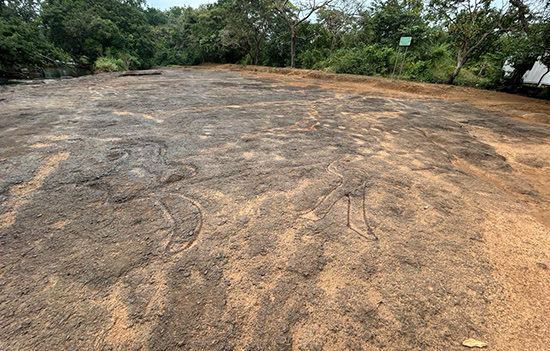 Site of Usgalimal petroglyphs.
Site of Usgalimal petroglyphs.
Reaching the Petroglyphs
In search of these Petroglyphs, we went
on a two hour drive from Panjim. Heading further south from Margao, the road
became narrower, gaps between the dwellings greater, and the ubiquitous Coke
signboards all but disappeared. We almost missed the most non-descript and almost
invisible signboard indicating that we had to take a right turn towards the site.
The paved road transformed into a reddish-muddy
track with dull-green shrubs on either side, a few short trees with low hanging
branches, and a deathly silence. No human, bird, animal or insect was visible. An
abandoned iron quarry, with huge boulders carved out of a mountainous patch,
added to the gloomy setting. The Petroglyph site still eluded us.
Google Maps led us to paths that led to
nowhere, requiring us to retrace our previous tracks. We abandoned our car in an
open spot, and decided to carry on our quest by foot. A lucky strike, when out
of the blue, we spotted a quiet river, with still, greenish turquoise waters.
We exulted at the sight of a small mud hut and Motorbike. Never had I been
happier to see a Motorbike in my entire life. A confirmation that a modern
human was present there.
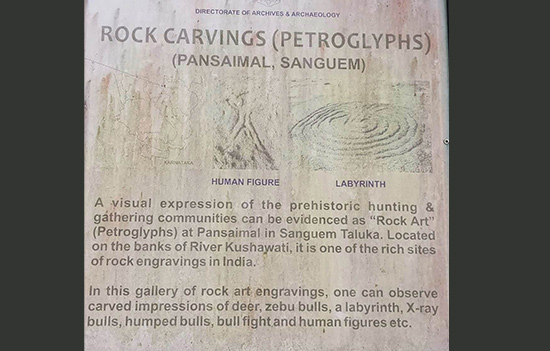
Discovering the
Petroglyphs
There
were two security Guards who doubled up as guides and showed us the site. There
were over 100 different carvings, representing animals, birds, humans and a
Labyrinth. The Labyrinth was the piece-de-resistance!
 Labyrinth on the banks of the river Kushawati in Goa.
Labyrinth on the banks of the river Kushawati in Goa.
Considered to be the oldest in Asia, “studies have deciphered the image, being closest to that of a tightly-coiled python or a serpent with cup holes in the centre and four creases or wrinkles at the folds. These “openings” at the folds could not be discerned readily, and, were most likely carved out so that the fructifying rain water or the sacrificial blood would flow freely throughout the labyrinth.” Source ((2018) Themistocles D’Silva)
Some of the intricate carvings indicated an extra-ordinary skill of our Hunter-Gatherers ancestors using the most primitive tools viz “Microliths”, or tiny pieces of Stone shaped to chip away at rocks. We sat down on the rocks to soak in the setting! Conjuring up images of human’ hunter-gatherers sitting on the same spot, diligently working over years to create their works of art.
They represented man’s foremost desires to communicate and express their feelings and emotions, by drawing, sculpting and painting on rocks and caves. These artistic expressions which have been discovered in several parts of the world, sometimes bear an uncanny resemblance to similar petroglyphs created thousands of kilometres away in Europe. Did these ancient Humans traverse vast distances and replicate their artistic skills? A mystery whose code will probably never be unlocked since the keys have been lost in the eons of time.
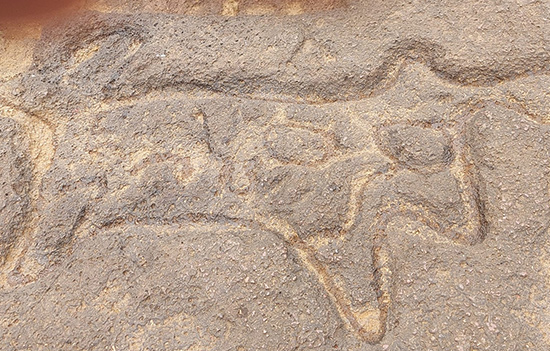 Deer.
Deer.
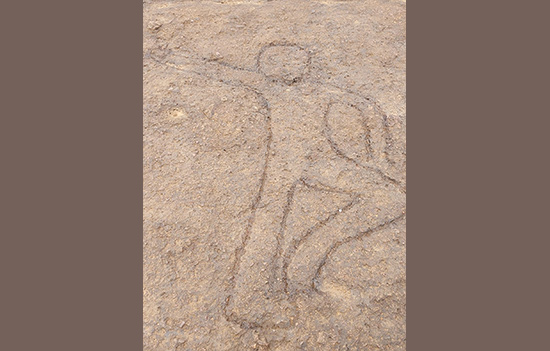 Dancing human.
Dancing human.
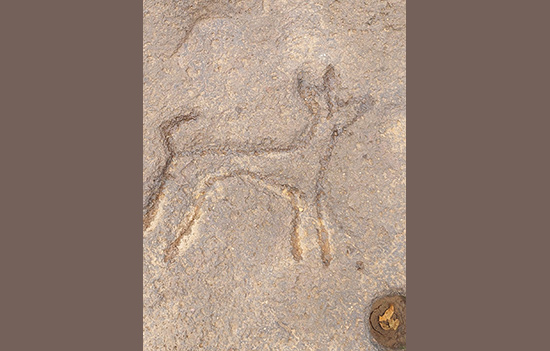 Dog.
Dog.
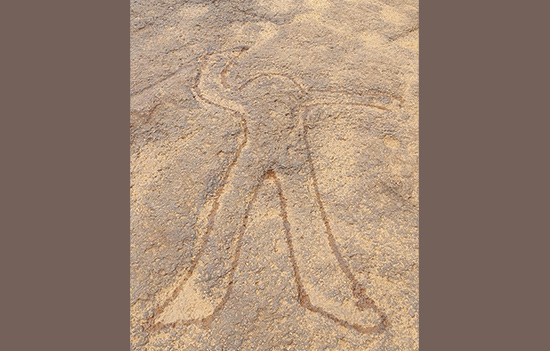 Human with outstretched arms.
Human with outstretched arms.
 Trishul.
Trishul.
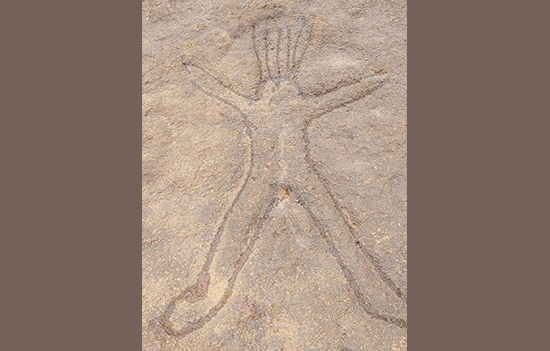 Human with hand flying.
Human with hand flying.
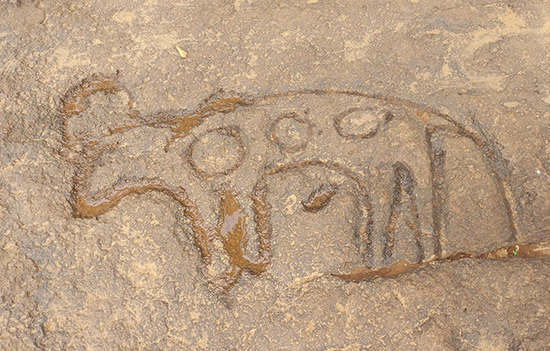 X-ray Bull.
X-ray Bull.
Goa evokes images of Beaches, Churches,
Feni, and Fish-Curries, but for those who are still hungry for more, could
include Usgalimal in their bucket list.
All pictures by author. To read all
articles by author
Also
on Goa
1. Tambdi Surla Waterfalls
2. Tambdi Surla Shiv Temple
3. Shigmo
festival in Goa
4. Temples of Goa
5. Handloom
Saris of Goa and Maharashtra